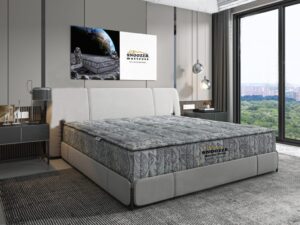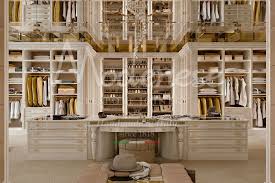Luxury is no longer defined solely by square footage or a penthouse floor. In 2025, what makes a home feel expensive is less about cost and more about how cleverly space, light, materials, and details are used to shape a sensory experience.
Developers across Dubai have started to understand that high-net-worth buyers and aspirational homeowners are looking for more than branded kitchens or spa-style bathrooms. They want subtle, intentional design that elevates the way they live.
In this blog, we decode what gives a space that quiet sense of luxury and how Dubai’s leading developers are weaving it into homes across various price points.
The Shift from Loud Luxury to Layered Sophistication
Dubai has always been a city that celebrates bold architecture and high-impact interiors. But the new wave of luxury is quieter. Buyers are drawn to homes that feel intentional, lived-in, and timeless. And developers are responding by using design tricks that don’t scream luxury, but whisper it.
These are the kinds of design decisions that make someone pause during a viewing and think, this just feels more refined.
Key Design Elements That Influence Perceived Luxury
| Design Element | What Makes It Feel Expensive | Where It’s Being Used |
|---|---|---|
| Ceiling Height | Creates a sense of space and airiness | High-end towers in Business Bay, Downtown |
| Lighting Design | Layered lighting and cove lights add dimension | Sobha Hartland, Dubai Hills |
| Floor Finishes | Larger tiles or natural materials look more premium | Jumeirah Bay, Meydan |
| Wall Treatments | Neutral, textured walls or paneling add warmth | Branded residences across the Marina |
| Hidden Storage | Clutter-free environments feel sleek and curated | The Lana Residences, Madinat Jumeirah |
| Door and Handle Quality | Heavier doors and metal fixtures feel bespoke | Tilal Al Ghaf, DAMAC Lagoons |
Material Choices That Signal Luxury Without Flash
Some finishes instantly change the way a home feels, regardless of budget. Developers are increasingly choosing:
- Matte finishes instead of glossy for cabinetry and tiles
- Real or engineered stone for kitchen counters and vanities
- Wood-look tiles for warmth without maintenance issues
- Brushed metal hardware in tones like bronze or gunmetal
These details don’t cost significantly more in the context of an entire unit but dramatically elevate how the space is perceived.
Layout Tricks That Change the Experience
Smart design is often invisible. The way a home flows, the light hits the floor, or how one room opens into another can all influence how premium a space feels.
Here are a few layout strategies developers in Dubai are adopting:
Open but defined zones
Instead of one large open space, designers use shelving, glass partitions, or lighting to create subtle boundaries between kitchen, living, and dining areas.
Entry sequences
A proper foyer or even a small alcove at the entrance helps transition from outside to inside and sets the tone for the home.
View framing
Aligning windows and doors to frame key views creates intentional sightlines, which makes spaces feel curated.
Circulation clarity
Ensuring each room connects logically to the next adds a subconscious sense of ease.
Lighting: The Unseen Hero
Arguably the most underappreciated factor in perceived luxury is lighting. Not just in terms of brightness, but how layered and adjustable it is.
Types of lighting used to elevate spaces:
- Cove lighting for ceilings or floors
- Wall washers to highlight textures
- Warm LED spots over key zones like kitchen islands
- Dimmer switches for mood control
These are increasingly offered even in mid-range developments, thanks to smart automation and modular lighting kits.
Minimalism Done Right
Minimal doesn’t mean bare. True luxury minimalism in Dubai now includes:
- Hidden appliances behind cabinetry
- Wall-mounted taps and floating vanities
- Uniform color palettes across materials
- Absence of visual clutter
Projects in areas like City Walk, Bluewaters Island, and Dubai Design District are redefining what minimal can feel like when executed thoughtfully.
Small Details That Create Big Impressions
Sometimes it’s the tiniest design decisions that make the biggest difference.
Flush skirting boards
Seamless transitions between walls and floors signal custom design.
Shadow gaps
Used instead of traditional molding, they add a clean, architectural detail.
Handle placement
Centered or oversized handles in natural brass or leather immediately stand out.
Cabinet depth
Slightly deeper kitchen cabinetry not only adds functionality but a visual richness to the space.
How Developers Use These Tricks to Justify Price
Buyers today are highly visual and research-driven. They scroll through listings, visit multiple showrooms, and often decide within minutes whether a home feels “worth it.”
Developers are now designing show homes with these tactile, spatial cues to create that feeling of quiet luxury and emotional resonance.
For instance:
- A studio with 2.9m ceiling height and smart storage may outsell a larger unit with basic finishes.
- A one-bedroom apartment with dimmable lighting and natural-tone finishes may feel more livable than one with marble and mirrors.
- A villa with thoughtful landscaping and floor-to-ceiling glass will likely command more than a similar one with generic finishing.
Luxury in Dubai real estate is no longer about the obvious. It’s about restraint, depth, and execution. As buyers become more design-aware and globally inspired, developers are having to respond with homes that feel expensive, not just look expensive.
The result is a more refined market. One where every material, layout choice, and design element works harder to earn its place. And that might just be the most exciting thing happening in the city’s residential spaces today.

)
)
)
)




